Ryan Hall's Blog, page 267
April 14, 2016
Woman With Parkinson’s to Run Boston—Her 10th Marathon in 2016
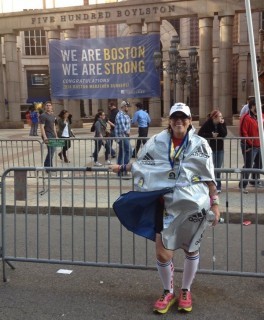
After not being able to finish at the 2013 Boston Marathon due to the bombings, Rhonda Foulds came back the following year in 2014 to run the full race. Photo: Courtesy of Medtronic Foundation
Rhonda Foulds is not your average person living with Parkinson’s disease. In the past four months alone, the 52-year-old runner from Justin, Texas, completed nine marathons and is getting ready to run her 10th at this year’s Boston Marathon on April 18. Her goal for 2016 is to finish a total of 20 marathons.
With such an impressive display of endurance, it’s hard to believe that Foulds has been living with Parkinson’s—a progressive disorder of the nervous system that deteriorates physical movement—for almost two decades. She was diagnosed in 1999 at the age of 35 and was initially told she’d only live another 20 years.
“The doctor took that from a medical journal that was for older people. When you’re diagnosed at 60, 20 years isn’t that bad,” Foulds explains. “But back then they really didn’t know with younger people.”
A few months before her diagnosis, Foulds had started training for her first marathon. The White Rock Marathon in Dallas was going to be her reintroduction to running since her high school and college years. Marriage, raising three boys and a full-time job as a bank trainer in between had pressed a pause button on her running. “But, I always had a love for running,” Foulds says.
However, Foulds never went on to run White Rock. The shock from the diagnosis halted all training. And as her body began to exhibit the full symptoms of Parkinson’s—uncontrollable tremors, stiff movements and eventually the inability to walk—running was out of the question as well.
The diagnosis also affected her mentality around running. “Human nature and the things we tell ourselves is strange. Because I was diagnosed around the same time I was training, I was associating the two together,” Foulds recalls. “After the diagnosis, I sort of just sat around and didn’t do much of anything.”
In 2004, Foulds’ neurologist suggested she undergo surgery for deep brain stimulator implants. She recommended Dr. John Michael Desaloms, a neurosurgeon at Presbyterian Hospital in Dallas, who had performed the fairly new procedure about eight times before meeting Foulds.
“I was the youngest person they had ever done the surgery on,” says Foulds who was taking 32 medications and was told that this regimen would eventually stop working. “Normally they wait until people are at a point where they’re really bad. [Dr. Desaloms] didn’t believe in that. He thought if you did it when someone was younger, you’d have a better chance of success. I was his first success story.”
A month after the surgery and after the swelling in her brain had subsided, Foulds was rolled into the doctor’s office in a wheelchair by her husband, Dennis. Once the stimulator in her brain was turned on, Foulds instantaneously got up and walked out of the office for the first time since her diagnosis.
“It was a miracle,” she says. “We both cried.”
Thanks to the deep brain stimulators, Foulds could walk normally again and her tremors had disappeared (except for when the stimulators are turned off for check-ups), but it took another five years before she found the courage to run again. It started with wanting to lose the weight she had gained during the years she couldn’t walk. So, she began with walking 30 minutes everyday.
When her son, Zachary, came home on leave from the Marines in 2009, he encouraged her to run from one light pole in a neighborhood park to another. The short jaunt had felt so good that upon exiting the park, Foulds saw a flyer for a local 5K and immediately signed up for it.
“It was kind of like PTSD for running,” says Foulds, referring to the negative association she had placed on running with her initial Parkinson’s diagnosis. “I’m really grateful [Zachary] had made me run a little bit, because if he hadn’t I would have never done it.”
Since then, Foulds has maintained a total weight loss of 90 pounds and has run 35 marathons to date, raising money and awareness for nonprofits like the National Parkinson’s Foundation. In 2011 she finally had the opportunity to finish what she had started in 1999: Train for and run the White Rock Marathon and complete her first marathon ever. She also ran the Boston Marathon twice—this year will be her third running.
Foulds’ first Boston Marathon experience occurred in 2013. She and more than 3,000 other runners had been stopped at mile 23.8 with no information or cell phone service to relay news about the terrorist bombs at the finish line. It was another hour before they were moved off the course to a nearby school for shelter, and not until 10 p.m. when Foulds got back to her hotel room, where she was reunited with her unharmed husband who had been waiting for her at the finish line.
The following year she and others who didn’t finish were invited back by the B.A.A. “It was probably the best experience of running I’ve ever had,” Foulds says. “It was really wonderful.”
This year Foulds is running in the mobility and impaired category at Boston and as one of the Global Heroes, a team of 25 runners with implanted medical devices sponsored by the Medtronic Foundation—the same medical device company that made the rechargeable battery implanted into Foulds’ chest in August of 2014. The battery is built to last nine years. Before that Foulds was having surgery almost every year to replace the battery.
“It’s kind of like those cell phone chargers you use to lay your cell phone on them,” describes Foulds who chargers hers every night, even though it can last up to three days. “There’s a big pad, I lay it on my chest and it charges from a remote that I have wirelessly.”
The 2016 Boston Marathon might be Foulds’ last. She says she wants to explore doing other races and recently joined the 50 States Marathon Club.
“It’s looked at worldwide as the marathon everyone wants to get into and the idea that in 1999 when they told me I had Parkinson’s—I didn’t think I would be able to walk anymore—and now here I am doing the Boston Marathon,” says Foulds, who holds a 4:26 marathon PR. “Actually every marathon that I do is a big deal for me. The fact that I’m out there still doing it, still running.”
The post Woman With Parkinson’s to Run Boston—Her 10th Marathon in 2016 appeared first on Competitor.com.
Is the 20-Mile Long Run Right for You?

Adapted with permission of VeloPress from Hansons Marathon Method, 2nd Ed. by Luke Humphrey
In their recently released book, Hansons Marathon Method, 2nd Ed., the coaches of the Hansons-Brooks Distance Project reveal their innovative marathon training approach. The Michigan-based running squad, which includes 2016 Summer Olympics marathon team member Desi Linden, gained notoriety with their misunderstood “16-mile long run.” In this story, the head coach of Hansons Coaching Services shows why 20-mile long runs are often misguided and what runners should do instead.
There is an all-too-common misconception that one can prepare sufficiently for a marathon by simply running three days per week, provided one of those days includes a grueling 20-mile (or more) long run. That sounds simple, but the truth is that there’s a lot more to successful preparation than that. All runs are not created equal, and the long run, while key, is merely one component of a larger system that prepares you for success in the marathon distance.
The Hansons program has become known for the “16-mile long run” and a six-day-per-week running schedule that includes several types of workouts. Our approach has sometimes been perceived as renegade when compared with status quo programs on the market, and some runners have had their doubts when we promise they’ll PR with our program. In fact, in the first edition of our book Hansons Marathon Method, we shared the story of Kevin Hanson’s wife performing marvelously using our method, albeit all the while intending to prove the method wrong.
Since then, I’ve gotten similar e-mails, with runners who had been fired up to write a scathing “I told you so” instead thanking us for their PR and confessing that they never should have doubted the process. I don’t write these stories to gloat, but rather to show by example that there is more to successful marathon training than a few runs a week plus a long run. And while people tend to have laser focus on our 16-mile long run, they really have to embrace the whole picture of what the method entails.
Let’s take a look at the long run the Hansons way.
The Long Run
The long run garners more attention than any other component of marathon training. It has become a status symbol among runners in training, a measure by which one compares oneself against one’s running counterparts. It is surprising, then, to discover that much of the existing advice on running long is misguided.
After relatively low-mileage weeks, some training plans suggest back-breaking long runs that are more akin to running misadventures than productive training. A 20-mile long run at the end of a three-day-a-week running program can be both demoralizing and physically injurious. The long run has become a big question mark, something you aren’t sure you’ll survive, but you subject yourself to the suffering nonetheless. Despite plenty of anecdotal and academic evidence against such training tactics, advice to reach (or go beyond) the 20-mile long run has persisted. It has become the magic number for marathoners, without consideration for individual differences in abilities and goals.
While countless marathoners have made it to the finish line using these programs, the Hansons Marathon Method comes to the table with a different approach. Not only will it make training more enjoyable, it will also help you cover 26.2 more efficiently. While our long-run approach may sound radical, it is deeply rooted in results from inside the lab and outside on the roads. As I read through the exercise-science literature, coached the elite squad with Kevin and Keith, and tested theories in my own training, I realized that revisions to long-held beliefs about marathon training, and in particular long runs, were necessary. As a result, a 16-mile long run is the longest training day for the standard Hansons program. But there’s a hitch: One of Kevin and Keith’s favorite sayings about the long run is, “It’s not like running the first 16 miles of the marathon, but the last 16 miles!”
What they mean is that a training plan should simulate the cumulative fatigue that is experienced during a marathon, without completely zapping your legs. Rather than spending the entire week recovering from the previous long run, you should be building a base for the forthcoming long effort.
For example, let’s take a look at the Advanced Marathon Program in Hansons Marathon Method. The program includes a 16-mile Sunday long run. Leading up to the Sunday long run, the schedule calls for a tempo run on Thursday and easier short runs on Friday and Saturday. You don’t get a day completely off before a long run because recovery occurs on the easy running days. Since no single workout has totally diminished your energy stores and left your legs feeling wrecked, you’ll instead feel the effects of fatigue accumulating over time. The plan allows for partial recovery, but it is designed to keep you from feeling completely fresh going into a long run. Following the Sunday long run, you will have an easy day of running on Monday and a strength workout Tuesday. This may initially appear to be too much, but because your long run’s pace and mileage are tailored to your ability and experience, less recovery is necessary.
Long-Run Guidelines
The Hansons Marathon Method long-run guidelines are based both on years of experience and on the research by Dr. Jack Daniels, Dr. Dave Martin, Dr. Joe Vigil, Dr. Tim Noakes, and Dr. David Costill. Instead of risking diminishing returns and prescribing an arbitrary 20-mile run, the Hansons Marathon Method looks at percentage of mileage and total time spent running. While 16 miles is often the suggested maximum run, we are more concerned with determining your long run based on your weekly total mileage and your pace.
The Hansons Marathon Method will call for a long run that does not exceed 25-30 percent of your weekly mileage. Breaking this cardinal rule risks too much: injury, overtraining, depleted muscle glycogen, and subpar workouts in the following days or even weeks.
Yet a typical beginning marathon training program might peak at 40–50 miles per week and then recommend a 20-mile long run. Although this epic journey is usually sandwiched between an easy day and a rest day, there is no getting around the fact that it accounts for around 50 percent of the runner’s weekly mileage.
It may sound unconventional, but you’ll find that the Hansons Marathon Method long run is firmly based in science with proven results.
Risks of the 20+ Mile Long Run
Muscle damage
Long-lasting damage to mitochondria
Long-lasting damage to capillaries
Depleted muscle glycogen for up to a week
Let’s take a look at what science says about long-run mileage.
Long-Run Mileage Based on Weekly Training Volume
25% OF VOLUME
30% OF VOLUME
40 miles/week
10 miles
12 miles
50 miles/week
12.5 miles
15 miles
60 miles/week
15 miles
18 miles
70 miles/week
17.5 miles
21 miles
What do these numbers show us?
Marathon training is a significant undertaking and should not be approached with randomness or bravado.
They also make apparent the fact that many training programs miss the mark on the long run.
If you are a beginning or low-mileage runner, your long runs must be adjusted accordingly.
What is right for an 80-mile-a-week runner is not right for one who puts in 40 miles a week.
A Hansons 16-mile long run might be too short or too long for you. Before we make a conclusion, we must also consider your running pace.
Long-Run Duration Based on Pace
In addition to running the optimal number of miles on each long run, you must also adhere to a certain pace to get the most physiological benefit. Since we don’t all cover the same distance in the same amount of time, it makes sense to adjust a long run depending on how fast you’ll be traveling. The research tells us that 2:00–3:00 hours is the optimal window for development in terms of long runs. Beyond that, muscle breakdown begins to occur.
Look at the table below to see how long it takes to complete the 16- and 20-mile distances based on pace. The table demonstrates that a runner covering 16 miles at a 7:00-minute pace will finish in just under 2:00 hours, while a runner traveling at an 11:00-minute pace will take nearly 3:00 hours to finish that same distance. It then becomes clear that anyone planning on running slower than a 9:00-minute pace should avoid the 20-mile trek.
Long-Run Durations Based on Pace
16 MILES
20 MILES
7:00/mile
1:52
2:20
8:00/mile
2:08
2:40
9:00/mile
2:24
3:00
10:00/mile
2:40
3:20
11:00/mile
2:56
3:40
12:00/mile
3:12
4:00
This is where the Hansons 16-mile long run comes into play. Based on the mileage from the Hansons marathon programs, the 16-mile long run fits the bill on both percentage of weekly mileage and long-run total time.
So what does this mean for you? The science shows that a 20-mile long run might, in fact, be right for you, but only if your weekly mileage is around 65 miles per week and if your long run workout pace is faster than 9:00 minutes per mile.
Everyone else should consider the long run the Hansons way, by factoring in weekly mileage and pace.
The post Is the 20-Mile Long Run Right for You? appeared first on Competitor.com.
Out There: The Taper Advice Nobody Tells You

Last week, I began tapering for an upcoming marathon.
Were I a rational person, I would use my newfound free time to conquer my neglected to-do list or treat myself to a relaxing massage. I would sit on my front porch and drink a cup of tea while smiling at all the poor saps who still have long runs on their calendars. I would do the charity work I promised the Endurance Gods all those times I begged them to just make the weather suck a little less for today’s run, please.
Then again, I suppose if I were a rational person, I wouldn’t be running a marathon in the first place.
Instead of using my wide-open schedule to relax and bask in the glory of all that is taper, I’ve been doing the same thing I’ve done before every race: panic.
You know what I’m talking about, right? Every race, we resolve to trust in our training. The proverbial hay is in the barn, and we should feel proud of the work we’ve done to prepare for the event. Yet something always seems to pop up that makes us second-guess ourselves.
During the taper, I become hypersensitive to any and all suggestions that my training is crap, my nutrition is crap, my gear is crap, I’m crap, and my race will be crap.
The shoes I love and swear by? It’s a miracle I’m not injured wearing them, one of my Facebook friends commented last week.
My gel-and-water fueling strategy? Ridiculous! Why didn’t I teach myself to burn my own fat for fuel, like the smarty so-and-sos in my running group?
According to certain websites, I should have eaten more carbohydrates or kicked off my taper with a three-day juice cleanse or inhaled giant hunks of organic grass-fed meat, Flintstones-style, until I got the meat sweats.
And the advice is everywhere: Do this! Wear that! Don’t EVER do this, except for when you should! ALWAYS eat this, except for when you can’t, or won’t, or shouldn’t! Do it EXACTLY like this person! Be less this..no, wait…that! No, NOT THAT, the other thing! You should do XYZ, not ABC, and DEFINITELY never 123!
So, in summation: I’ve been doing it all wrong.
This is the problem with being exposed to running advice during taper. Other people seem so absolute, so confident, that we wonder if they know more than we do. We believe their certainty and their USE OF CAPS LOCK is a sign we should take their statements as fact. We listen intently and commence panicking because maybe we don’t know as much as we thought we did.
Maybe that’s the bigger problem.
When we second-guess ourselves based on someone else’s experiences, what we’re really saying is that our own experiences are invalid. We get so caught up in listening to people tell us how to run, we forget we’ve already learned from the best teacher: running. Our lessons are individual. What works for one won’t always work for another. Something that functioned for me in training might fail for you; or for you it was amazing and for me it was frustrating.
The only absolute about running is that there are no absolutes.
So here’s the advice we never hear during taper, but probably should: You don’t need any more advice. You already know what you need to know.
So do what works for you. Wear those moon boots to your marathon. Eat sushi the morning of your race. Train exclusively on uphills or downhills or underwater or whatever it is that’s worked for you this far. Do XYZ. Or ABC. Or even 123, if that tickles your fancy. Go on, get down with your bad self. You got this.
Now pour yourself a cup of tea, settle in on the front porch, and pretend to be a rational person.
* * *
About The Author:
Susan Lacke does 5Ks, Ironman Triathlons and everything in between to justify her love for cupcakes (yes, she eats that many). Susan lives and trains in Salt Lake City, Utah with three animals: A labrador, a cattle dog, and a freakishly tall triathlete husband. She claims to be of sound mind, though this has yet to be substantiated by a medical expert. Follow her on Twitter: @SusanLacke.
The post Out There: The Taper Advice Nobody Tells You appeared first on Competitor.com.
Shoe Of The Week: Brooks Neuro
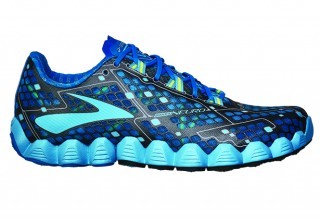
The new Brooks Neuro is one of the most innovative shoes we've tested. Photo: Mark Doolittle
Cushioning, energy return and ground feel come together in one crazy-flexible shoe. With a completely decoupled midsole/ outsole undercarriage, the Neuro can respond to both strike force and external forces—think uneven ground—for smooth running. Its unique undercarriage design features a perimeter of pods with soft centers and firmer, more supportive frames, allowing this neutral shoe to offer shock-absorbing comfort with a touch of stability. A unique interior “hammock” supports the foot from below while a pliable upper wraps the foot from above. It feels like a modern version of a “barely there” minimalist shoe that offers a touch more cushioned, supportive and energetic responsiveness. As such, it’s a shoe that’s both light and fast and can also sufficiently cover longer distances—especially efficient runners who are light on their feet and can handle slightly less shoe under foot. It’s hard to categorize this shoe, but it’s more flexible than any shoe we’ve tested and certainly one of the most innovative.
This is the shoe for you if … You’re a strong-legged runner looking for a very flexible shoe that’s minimally constructed but still offers a twinge of support.
Price: $130
Weights: 9.6 oz. (men’s), 7.8 oz. (women’s)
Heel-toe offset: 8mm; 25mm (heel), 17mm (forefoot)
Info: BrooksRunning.com
RELATED: Shoe Of The Week—Hoka One One Clayton
The post Shoe Of The Week: Brooks Neuro appeared first on Competitor.com.
Old-School Sneakers: A Museum Curator’s Vintage Running Shoe Collection

Photo: Scott Draper
Dave Kayser didn’t start collecting running shoes on purpose. Like a lot of people who started training for races during the first running boom of the 1970s, he just had a lot of shoes he became attached to and didn’t want to toss in the trash.
Initially, he hung his retired models on a fence post in his backyard, but, as a professional museum curator, his passion for preserving history carried over into running and he became a serious shoe aficionado. Over the past 40 years, he’s collected more than 120 vintage models, ranging from 1930s handmade leather track spikes to some of the first mass-produced training shoes in the 1960s to the flashy, technologically enhanced models of the 1980s, 1990s and 2000s. Kayser, now 63 and retired, gave us an up-close view of his collection, which is stored in a temperature-controlled environment in his home in the Boston suburbs. If you look closely enough at some of his favorites pictured in this gallery, you can get a glimpse of the evolutionary path running shoes have taken from their formative years to the present.
While some of the old-school brands and concepts have long since been extinct, you might be able to spot a few design elements and performance features that are still present in the modern running shoes you’re wearing now, as well as some of the traits that led to both the minimalist and maximalist cushioning trends of the past decade. You should also be able to see some of the models that have returned amid the retro sneaker craze of the past several years.
As much as running shoes continue to evolve, here’s a little proof that what’s past is prologue as we showcase 30 pairs of shoes from Kayser’s massive collection.
Photo Gallery
1 of {count}
Back to Start
View Larger Image

Spalding Track Spikes, 1930s
View Larger Image

Spalding Track Spikes, 1930s
View Larger Image

New Balance Trackster, 1960
View Larger Image

EB Lydiard Marathon, 1970
View Larger Image

Onitsuka Tiger Marathon, 1971
View Larger Image

Wilson Cross Country, early 1970s
View Larger Image

Nike Obori, 1972
View Larger Image

adidas Dragon, 1972
View Larger Image

Brooks Vantage, 1976
View Larger Image

New Balance 320, 1976
View Larger Image

Brooks Villanova, 1977
View Larger Image

Dunlap Osaga KT-26, 1978
View Larger Image

Pony California, 1978
View Larger Image

Nike Air Tailwind, 1979
View Larger Image

Saucony MS Trainer, 1980
View Larger Image

New Balance 420, 1982
View Larger Image

Nike Elite Classic, 1982
View Larger Image

Converse Special-Edition Racing Flat, 1983
View Larger Image

Nike Sock Racer, 1985
View Larger Image

ASICS Tiger Alliance 1985
View Larger Image

Nike Air Icarus, 1991
View Larger Image

ASICS GT Cool, 1991
View Larger Image

Reebok Dual Pump Runner, 1991
View Larger Image

Nike Air Huarache, 1991
View Larger Image

Turntec Road Warrior II, 1991
View Larger Image

Puma Disc System Runner, 1991
View Larger Image

Nike Air Pegasus, 1992
View Larger Image

Mizuno Wave Rider 2, 1999
View Larger Image

Customatix Custom Trainer, 2000
View Larger Image

Teva Trail Wraptor, 2000
View Larger Image

Shoe Collector Dave Kayser

More Galleries
The post Old-School Sneakers: A Museum Curator’s Vintage Running Shoe Collection appeared first on Competitor.com.
April 13, 2016
Trail of the Week: Montana de Oro State Park, Central California
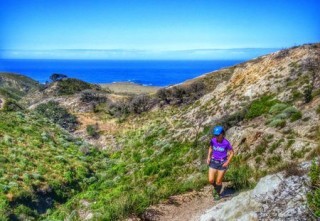
Photo: Paul Jurasin
Our Trail of the Week feature is made possible through a partnership with Trail Run Project, a crowd-sourced collaboration by and for the running community. Thanks to Paul Jurasin for mapping and describing this route.
This route, which combines sections of the Rattlesnake Flats Trail and the Coon Creek Loop Trail, is entirely within Montana de Oro State Park in Central California. It combines amazing rugged coastal bluffs with a steep climb through coastal oak and back down to the coast through a lush riparian valley. The trail is generally in excellent condition throughout. The coastal bluff is wide singletrack, well groomed and can be more crowded than the narrow rocky climb on the Rattlesnake Flats section.
The trailhead is just past the Spooners Cove ranger station on the right (ocean) side of the road. Parking is available near the trailhead on the roadside.
The first 2 miles of this amazingly scenic run is on a relatively flat, wide trail located on a bluff 50 feet above the rocky ocean shoreline. This section of the route is known as the Bluff Trail. At 2 miles, the Bluff Trail ends at a parking lot with restrooms.
From the parking lot, run 100 yards northward along the Pecho Valley Road where the entrance to the Rattlesnake Flats trail begins. This trail segment is anything but flat. The narrow singletrack winds first through rolling terrain covered in scrub. After 1/4 mile, the trail begins its climb through a beautiful, rocky valley before rising to a ridge overlooking the Pacific Ocean. The trail winds along the ridge for nearly a mile before steeply dropping through several switchbacks to the Coon Creek Trail.
At the Coon Creek Trail intersection, turn right as the terrain becomes a gentle downhill singletrack through a lush canopy of greenery surrounded by impressive rocky cliffs on both sides of the trail. After winding down the trail for another mile or so, the Bluff trail intersection at the parking lot appears followed by a return along the rugged coastline for a 2-mile run the car.
PHOTOS: Trail Running in San Luis Obispo, California
The Data
Miles: 7.5
Runnable: 95 percent
Average Grade: 4 percent
Max Grade: 23 percent
Total Ascent: 703 feet
Total Descent: -707 feet
Highest Elevation: 539 feet
For a closer look, check out the interactive map, data, photos courtesy of Trail Run Project:
The post Trail of the Week: Montana de Oro State Park, Central California appeared first on Competitor.com.
Quick Look: Polar V800
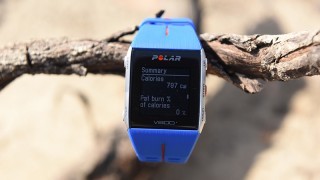
Photo: Valerie Brugos
The Polar V800 is a multisport GPS watch from a company whose earliest sport heart rate monitors date back to the 1980s. The experience shows: It includes every running feature imaginable and them some (including such metrics as triathlon-savvy open-water swimming distance). The watch is thick and rugged, yet not oversized. The smallish Gorilla Glass screen is the sharpest in low or bright light of any we have tested—you can easily see four data fields on one screen. A thoroughly modern (and modern looking) watch and platform, the V800 and Polar Flow site are highly reliable, with nearly flawless sensor pairing and syncing, while the Polar Flow app is seamlessly integrated and easy to configure, use and understand. We only wish Polar made a wrist-based heart rate version sans strap.
Recovery and Training Load
V800 and Polar Flow app have extensive yet simple recovery status tests and views, a well executed training diary, and overall activity and sleep displays.
Connectivity
Phone notifications, remote phone pick-up from watch, and recently added Strava integration are on board. The HL 7 heart rate sensor even automatically connects to many gym machine displays.
Custom Sport Profiles
Configure profiles from among 32 data fields. For trail running we built barometric altimeter screens including vertical ascent, descent, incline and altitude. For road running we included a screen with last-lap pace and last-lap average heart rate.
RELATED: 2016 Running Gear Guide: Wearable Tech
The post Quick Look: Polar V800 appeared first on Competitor.com.
Rethinking Recovery For Runners: Adopting A More Holistic Approach

Like training, you should periodize your recovery depending on where you are in your training. Photo: Shutterstock.com
Tennessee-based marathoner Margaret Molteni likes to finish off her long runs and track workouts by throwing on a pair of compression socks. The same goes for 40-year-old half marathoner Stephanie Diamond, who sometimes also chases a run with an ibuprofen. Speedy 2:58 marathoner Laura Anderson focuses on sleep, but also incorporates ice baths, foam rolling, and the occasional ibuprofen as well.
All three women are fairly typical of today’s runners—they want to recover quickly from tough efforts in order to reduce soreness and move on to the next workout. Indeed, the $2.3 billion compression sock market is expected to balloon to $3.2 billion by 2020, according to Persistence Market Research. And you don’t have to look far to purchase a foam roller today with everyone from Target to your local running shoe store carrying a full line of options.
While this way of thinking is trendy and well-intentioned, it’s certainly not the only approach. According to one school of thought, letting nature take its course is the way to proceed. In other words, some discomfort is purposeful and eliminating it can defeat the positive gains from training.
“If you artificially protect the body from the damage you incur from your workouts, you dampen its ability to adapt and improve,” says John Davis, author of Modern Training and Physiology for Middle and Long-Distance Runners. Steve Magness, author of The Science of Running and cross-country coach at the University of Houston, agrees. “If you look at how the body works, you realize you need to stress it to where it’s almost embarrassed,” he says. “The stimulus caused by damage allows the body to repair and adapt. This is where it makes its gains.”
Studies on the effects of ibuprofen and acetaminophen post-workout show that the medications inhibit muscle protein synthesis, exactly the opposite of what a runner actually wants. The same holds true for ingesting antioxidants post workout—vitamins E and C shut down adaptation in endurance athletes.
Somewhere along the line, runners have lost their way when it comes to the training and recovery process, says Magness. “The mindset has changed to where runners are focused on recovery and not the work,” he says. “Ask yourself what you are trying to recover from. If it’s a normal workout, let it go.”
That’s not to say recovery doesn’t have its place in a runner’s arsenal—it does. But there are a few different ways to approach it.
Stick to Nature
Switching back to a more traditional mindset might be challenging for today’s runners, but Magness has tips for getting it done.
“Just as you schedule in hard workouts and periodization, you should think about how and when you want to emphasize recovery,” he says.
Early on in your season is the best time to let go of specific recovery efforts and let nature take over, says Magness. “This is when the training emphasis is far more important than feeling good,” he explains.
Davis says you want to achieve the right balance here. Eating well-balanced meals, getting copious amounts of sleep and staying hydrated are key. “Support your body through good nutrition and sleep, but don’t try to shield it with gadgets,” he emphasizes.
Around heavy racing periods, Magness recommends evolving the training/recovery ratio a bit to include some recovery focus, including wearing compression apparel and taking ice baths after harder efforts. “At this stage you’re not as worried about fitness and are getting ready to race,” he says.
RELATED: Using Nutrition To Better Recover From Injury
Magness says you do want to recover after races, but you should not reach for a supplement or product as a substitute for natural recovery methods. “Go for an easy cool down run with friends post-race,” he says. “Talk over the race and decompress. You get a boost in testosterone from this effort and that helps your body recover.”
He also recommends giving your body food to help muscle protein synthesis post-race. “This doesn’t have to be complicated, just a good mix of proteins and carbs,” he adds.
If you are really sore, consider jumping in a pool to swim a few laps or just to “splash around,” says Magness, as you’ll help get more pressure from your calf muscles up to your heart, thus kick-starting the recovery process.
No matter what the time of year, Davis points to nature as your best friend. “The further you stray from natural methods of training, the less than ideal your results,” he says.
That’s just what Anderson has learned. As she guns for a PR at Boston, she’ll employ her number one recovery tool: sleep. “Extra sleep has had the biggest impact on my training and racing,” she says. “If I have 10 to 15 minutes at the end of the day, going to bed sooner will always win out.”
RELATED: Fast After 40: Master Your Recovery
The post Rethinking Recovery For Runners: Adopting A More Holistic Approach appeared first on Competitor.com.
April 12, 2016
It’s More Than Just The Hills in the Boston Marathon
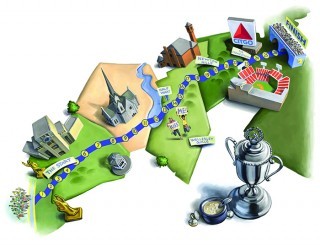
Illustration by Matt Collins
If you’re running the Boston Marathon, there are few more things to think about on the course than Heartbreak Hill. Here’s a quick glance at the course with a few interesting notes.
The Bus Ride
Getting on a bus in Boston Common before 7:00 a.m. to get shuttled out to the start of the race in Hopkinton can be a drag, but it’s only way to get 25,000+ runners there on time and it’s very well organized. Be prepared: take a newspaper or magazine to read, post-breakfast snacks to nibble on, a large bottle full of water or a sports drink to sip, and, just to be safe, your own personal roll of toilet paper. Also, mind the weather forecast and take an old long-sleeve shirt and maybe even sweat pants and a light shell that you don’t mind letting go of (or one that you can tie around your waist during the race).
Little Ol’ Hopkinton
The smallest town in the world of big city marathons, hospitable Hopkinton has opened its arms to busloads of runners on the third Monday in April since 1924. Few runners return on the other 364 days of the year, so most don’t know the town was founded in 1715 or that it was home to 11 boot factories in the 1850s. Your experience there will depend on the weather and how well you plan ahead (or how soon you get into the PortaPotty line!) Expend as little energy as possible, except for visualizing a slower-than-everyone-else start of the race.
VIDEO: Alan Culpepper’s Pre-Boston Marathon Tips
The Dastardly Downhill Start
Everyone worries about Heartbreak Hill at Mile 21, but the most devastating hill on the course might be the 350-foot elevation drop runners encounter in the first 4 miles. If you go out too fast or haven’t done long downhill tempo runs, you’re legs will feel like Boston clam chowder by the time you reach Heartbreak Hill. Many runners have been known to approach their 10K PR after a blazing start out of Hopkinton. Don’t be like everyone else; instead, run conservatively over the first 6 miles!
The Wellesley Girls
No race has such a concentrated, vociferous fan base as the Wellesley College “Scream Tunnel” at the half-way point. You can hear the Wellesley girls hootin’ and hollerin’ from a half-mile away. It can provide a huge boost of energy and/or a temporary lapse of concentration, but responding to the “Kiss Me” signs has been known to slow male runners by several minutes. Do what you gotta do, but remember, they probably won’t want to kiss you if you come back on Tuesday.
The Newton Hills
Heartbreak Hill gets most of the attention, but it’s the series of four hills between Miles 16-21 (plus the cumulative effect of sustained downhill running over the first 16 miles) that makes this part of the course so difficult. Still, Heartbreak Hill is a beast, rising 88 feet in about a half mile. Shorten your stride, use your arms and get through it. There’s still a lot of running to do once you crest the top of the hills and it’s those final 5 miles that will make or break your race, not how fast you run the hills.
Red Sox Mania
The marathon isn’t the only sporting event honoring Patriots’ Day in Boston. The locally beloved Red Sox play an 11 a.m. game at Fenway Park, located two blocks from the 25-mile marker on the race course. Spectators along the marathon route update runners of the score of the game along the way. Chances are you’ll hear fellow runners yell: “Let’s Go Sawx!” The Boston Marathon is an international event that feels as friendly as a local race and the spectators (many of whom have been watching the race from the same place for years) are a big reason why. So even if you’re a Yankees fan, you’ll have to appreciate Red Sox Nation cheering for you on the course.
The Homestretch
Once you run down the back side of the Newton Hills, you’re home free, right? Runner beware: the final 2 miles of the course, although mostly flat, can be brutal. The slight rise in elevation up Hereford Street to Boylston Street can feel like a major hill and the final four blocks to the finish can feel like an eternity. As soon as you turn onto Boylston Street, you’ll either get a huge boost of energy or tears will flow from your eyes. The homestretch of the Boston Marathon is definitely epic and worth savoring.
Never Forget
As you run the final two blocks toward the finish line, remember those who were killed and injured during the horrific 2013 terrorist bombing incident. As runners, we should always keep Krystle Marie Campbell, Lu Lingzi and Martin William Richard in our hearts (as well as Sean A. Collier, the MIT police officer who was killed several days later in pursuit of the terrorists). There were more than 300 people injured that day, some who will never walk again. Running the Boston Marathon is an honor and a privilege and it’s upon all of us who toe the line in Hopkinton to carry the history and the meaning of the race forward.
RELATED: Where to Qualify for the Boston Marathon
The post It’s More Than Just The Hills in the Boston Marathon appeared first on Competitor.com.
Workout Of The Week: Effort-Based Endurance Fartleks
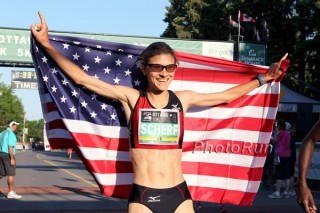
Lindsey Scherf's effort-based endurance fartleks workout helped her win the Ottawa 10K after a runner-up finish at the U.S. 25K Championships. Photo: www.photorun.net
The coach: Mike Barnow, Westchester Track Club, Westchester, N.Y.
The athlete: Lindsey Scherf, runner-up, 2012 U.S. 25K championships
When they did it: Barnow has been coaching Scherf since she was 10. He had her doing these effort-based fartleks after recovering from foot surgery in May of 2011. Barnow says that Scherf “thrived” on these workouts during her recovery period. Just a year after her surgery, Scherf went on to finish second in the U.S 25K championships and then went on to win the Ottawa 10K in Canada a few weeks later.
RELATED: What Is A Fartlek?
Why they did it: Barnow’s primary goal was to keep Scherf healthy as she ramped up her training. She completed her effort-based fartleks on dirt roads as opposed to stressing her body on the asphalt roads or on the track, where the pressure of running fast is persistent. She started out with few repeats and when she got healthier, Barnow increased the reps.
How they did it: Scherf began with a very easy 3-4-mile jog that took place on a different section of dirt path or road than was used for the workout. After the warm-up, she went right into a 1 x 8-minute fast interval, followed by 2 minutes of jogging, then 1 x 6:00 of fast running and another 2 minutes of jogging, then 2 x 5:00 at the fast pace with 2 minutes jogging rest intervals.
Her fast interval pace was relative to the distance trained. At the time Sherf was working on her 25K fitness, and so she started her first 8-minute repetition at slightly faster than her goal pace for 25K. Her pace gradually increased with each repetition down to 3K-5K race pace for the final 5-minute session. After completing the workout, Scherf ran 1-2 miles for a cool-down and ended the session with light stretching.
RELATED: The Halftime Fartlek
How you can apply the workout: “Start out slow,” Barnow says. “It’s not important that you try to run a specific pace. The key here is to remember the race you are training for.”
If you are training for a marathon, don’t run your repetitions at 5K race pace; run them relative to your goal marathon race pace. Barnow is a believer in letting the pace in workouts come to you.
“Think of this workout as a practice,” he says. “Don’t worry so much about pushing the pace. Instead, use the races to go all-out. The name of the game is not to tie up at the end of your workout; it’s all about continuousness.”
Barnow suggests leaving the pace calculator at home when doing this workout. Runners should concentrate on maintaining smooth form throughout the entire workout as opposed to running exact paces. Barnow says this workout is excellent for runners who put a lot of pressure on themselves to train at certain levels since the pressure of hitting certain splits has been lifted.
The post Workout Of The Week: Effort-Based Endurance Fartleks appeared first on Competitor.com.
Ryan Hall's Blog
- Ryan Hall's profile
- 21 followers



